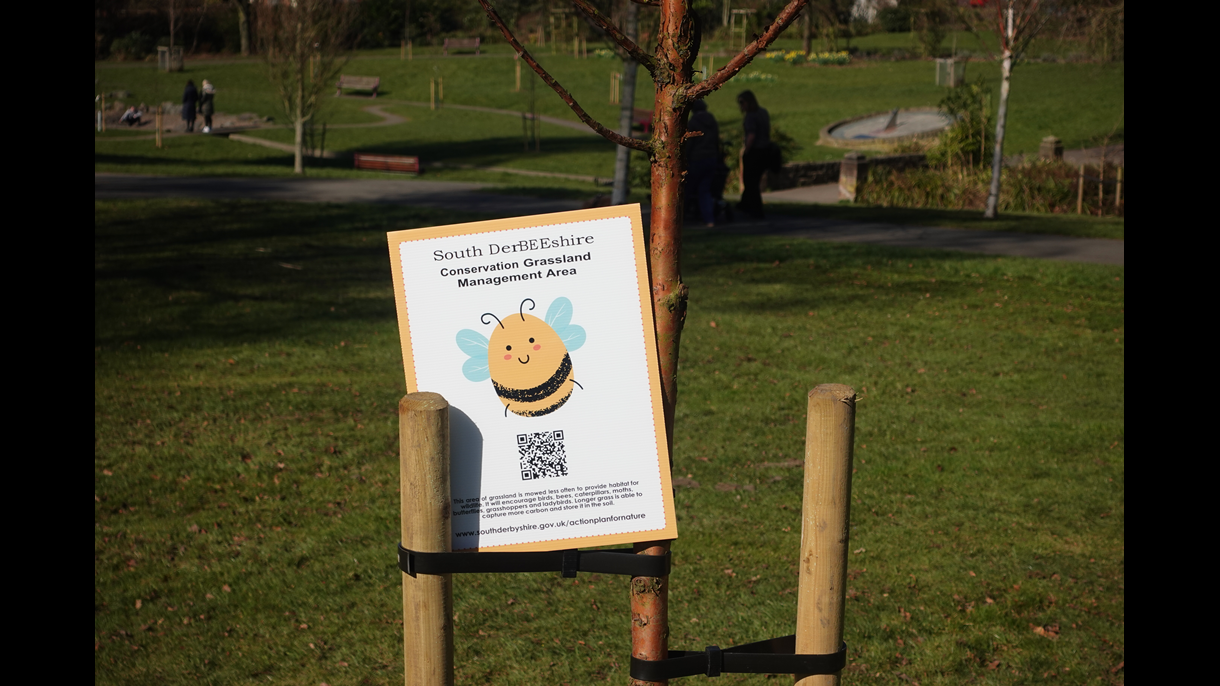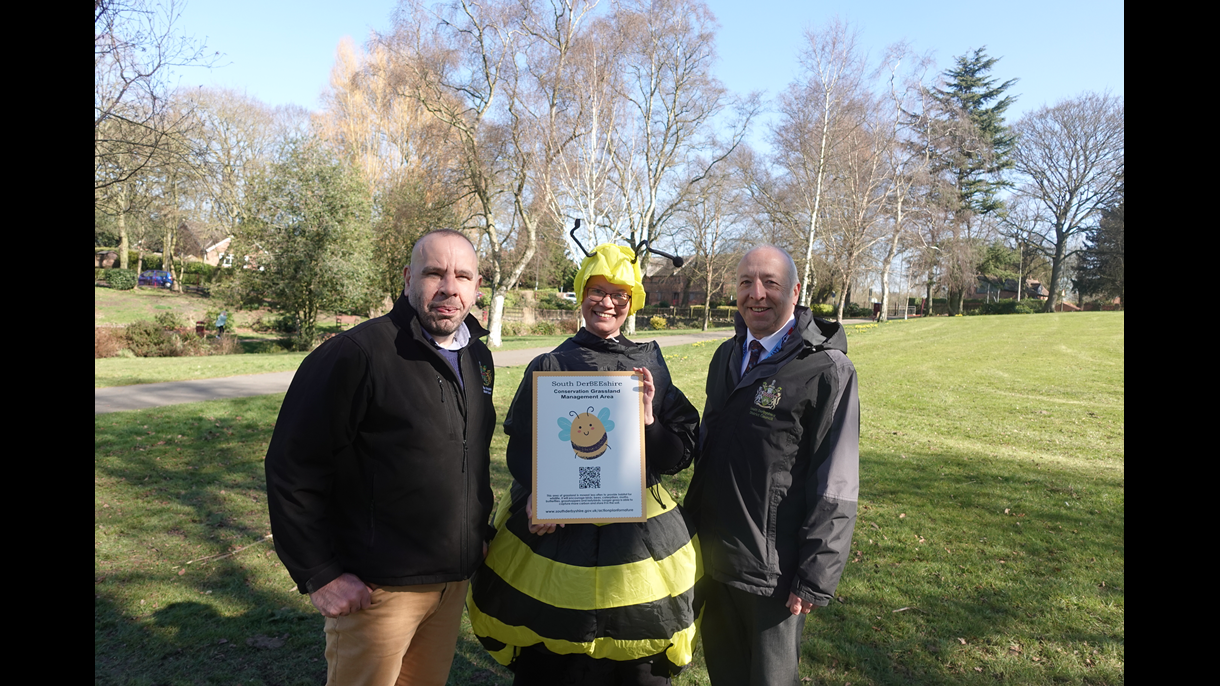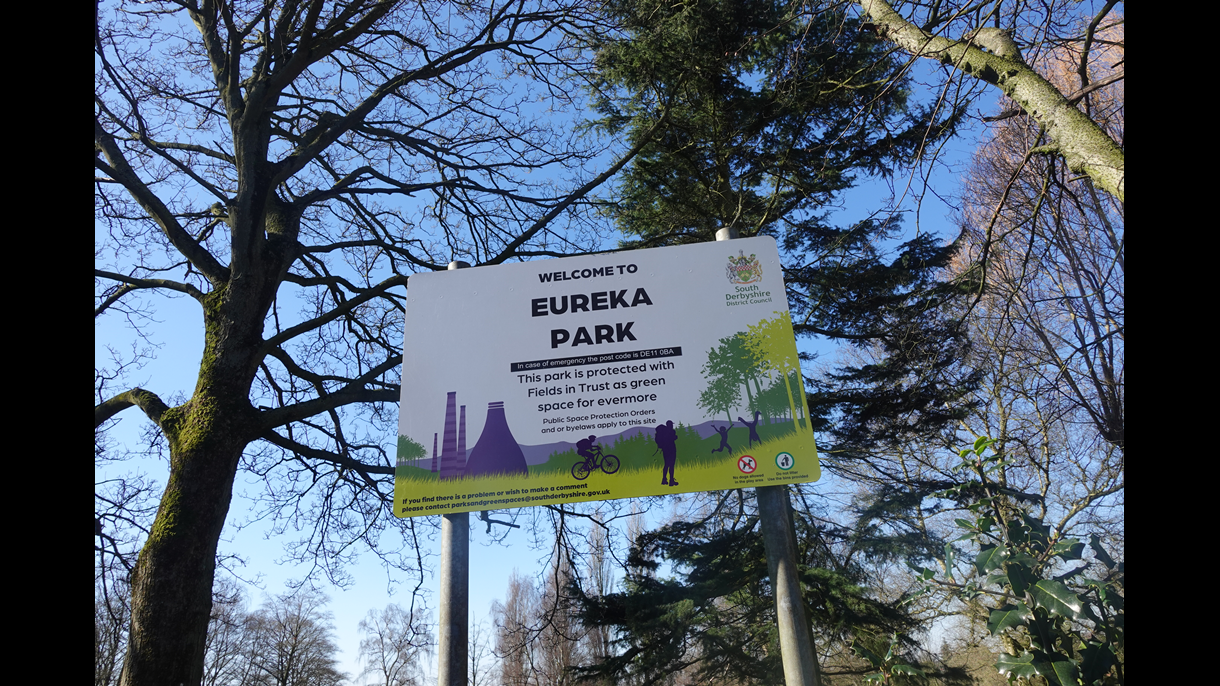South Derbyshire's Grass Management Strategy 2025
2025 Grass Management Strategy
‘No Mow’ is no accident: It’s part of a Greener Future for Wildlife!
In South Derbyshire, we are dedicated to creating beautiful green spaces, which look great and create spaces where people can enjoy their leisure time. But the environments we create, are not just for us as human beings – we have to consider the local biodiversity and the importance of supporting local habitats for wildlife.
South Derbyshire District Council has this March launched its most ambitious Grass Management Strategy yet. As you explore the District, you may notice that while some areas are neatly trimmed, others are left to grow wild. This is all part of our carefully planned approach to supporting local biodiversity.
Following the positive environmental impact of previous ‘No Mow May’ initiatives, we are now expanding this effort across wider areas and for a much longer period, spanning the entire summer.
This flexible and comprehensive strategy is not a cost-cutting exercise; it’s a proactive step towards improving our environment. To highlight these designated areas, you’ll spot ‘Bee’ signs across the District, reminding everyone that this natural approach is buzzing with benefits!
Our commitment to nature and climate action
This work forms a key part of our ‘Action Plan for Nature’, which supports our commitment to tackling the ecological emergency and shaping our environment . By taking a more sustainable approach to grass management, we are helping to restore vital habitats, protecting endangered species, and boosting biodiversity across the District. This initiative is just one of the many ways we are making a real, lasting difference for wildlife and future generations.
Why are we letting the grass grow in certain areas?
Allowing grass to grow taller fosters diverse and thriving ecosystems. Longer grass provides a home for insects, birds, and mammals, helping to pollinate plants, control pests, and enhance biodiversity. Here’s why this approach is so important:
-
Healthier soil and tees: Longer grass develops deeper roots, which stabilise soil, prevent erosion, and improve nutrient storage. This also benefits trees by reducing root damage from mowing and promoting natural moisture retention. Strimming and mowing around tree bases can cause damage, leaving trees vulnerable to pests and disease. Allowing the grass to grow around trees helps to protect their delicate root systems and supports woodland ecosystems.
-
More wildlife: Invertebrates thrive in uncut grass, offering food for birds and hedgehogs. Meadow brown butterflies lay eggs on long grasses, while spiders use tall blades for their intricate webs. Moths, a vital food source for blue tits, also benefit from these habitats.
-
Vital shelter for amphibians: Frogs and newts need damp hiding spots and invertebrates to eat. Long grass provides the perfect refuge, helping them survive during the driest months of the year.
-
Enhanced wildflower growth: Reduced mowing allows native flowers like orchids to flourish, attracting even more pollinators such as bees and butterflies.
Get involved!
Why not try this at home? Letting part of your garden grow wild can attract fascinating wildlife while supporting the environment. Whether it’s leaving a patch of grass uncut or planting wildflowers, small changes can make a big difference.
FAQs
Why are some grassed areas left uncut while others are maintained?
This is part of South Derbyshire District Council’s planned Grass Management Strategy 2025. Some areas will be mown as usual, while others will be left to grow longer to support local biodiversity. This approach helps create vital habitats for wildlife and enhances the natural environment.
How long will this strategy be in place?
The initiative has already begun and will continue throughout the summer months. Unlike previous ‘No Mow May’ efforts, this extended strategy covers more areas and a longer period to maximise ecological benefits.
How will I know which areas are part of this initiative?
You’ll see ‘Bee’ signs across the District, which highlight the areas where the grass is being left to grow.
What will conservation grassland look like?
Some areas may take a few years for the fine grasses and wildflowers to become more dominant than the vigorous grasses. But with each year it will look better. Beauty is in the eye of the beholder, and hopefully through this project everyone will be able to appreciate the natural beauty of semi-natural grassland, as well as the increase in wildlife that will return such as butterflies and bees.
Why aren't there any colourful wildflowers? Shouldn't you have sown wildflower seed?
Over time we may introduce areas of annuals, like poppy and cornflower. However initially it will mostly be full of grasses, types of daisies, pea and vetch.
Grassland is just grass with no wildflowers, what’s the point of doing grassland management.
Each grassland area is different, and it will take time. By not cutting, we are giving wildflowers the chance to set seed. The wildflowers will take time to appear because of the excess nutrients in the soil.
How will this benefit my local open space?
By improving the natural environment, we will be making your area a more wildlife friendly place to live. By making more space for nature, this can improve pollination rates for flowers, fruit and vegetables in your area. Over half our food needs pollination by insects.
What's in it for me?
We all need biodiversity to allow us to live our lives. The biodiversity that surrounds us provides us with clean air to breath, freshwater to drink, clothes to wear and food to eat. Wildlife and the natural areas around us underpin our health and well-being. On top of that, you may discover new wildlife in your area, such as an exciting glimpse of hedgehogs that come to feed at night or butterflies flitting past your front door.
Will it improve things for wildlife?
Yes, there is a large body of scientifically gathered evidence to demonstrate that grasslands support a number of species from butterflies to bumblebees, hoverflies to beetles, birds to mammals. It will take a little time for the wildlife to return, but by having these areas that are managed well for wildlife will make local wildlife resilient to change by having a safe area to live and also help increase populations of rarer species that are just holding on.
Will this change save the Council money?
Conservation grassland management is a positive change to how we manage our large estate of grasslands for the benefit of wildlife and people. However, the change in management does not deliver any significant financial saving, it just enables us to use resources differently.
Will it encourage rats and other pests?
No. Discarded food and food wrappers attract rats. Long grass itself will not attract them further. In fact, by encouraging wildlife this can have a positive impact on pests especially in the context of gardening where hedgehogs may eat slugs and snails, and ladybirds will eat aphids from vegetables you might grow.
Can I do something similar in my own garden?
Yes! Even leaving a small section of your lawn uncut can attract more wildlife and support local biodiversity. Planting wildflowers is another great way to help pollinators thrive.
Click here for some useful ideas and inspiration: How To Increase Biodiversity In Your Garden - Woodland Trust - Woodland Trust.





.png)
